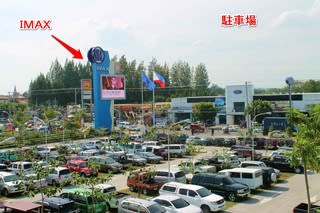Let us take a look at the grandest pictures first.

My primary interest is the navigation within the largest square area. The area surrounding Jakarta is of little interest for the moment. On the border line between these two squares lies Surabaya.
Another smaller square up top is also of great interest to me. Since the Philippines is only a few hours flight from Tokyo this area contains very natural gateways to the regions further south.
To talk about them I need another picture, enlarging the area in question as follows.

3 natural routes are immediately noticeable on this map. P, Z, ad G.
Of these the route designated as "P", coming down from Metro Manila, through Mindro, then down the whole length of Palawan, and ending up in Kota Kinabalu possibly is a non-starter. I have not been able to find any reference to it.
I can think of the reason. The other two routes have a very heavily populated hinderland in terms of Mindanao, warranting large ports anywhere on the island. And yet, on Palawan the largest port is only located in Puerto Princesa where population concentration is highest.
Also, all these routes are more or less constantly under islamic influence and are politically unstable at times. That will explain the lack of significant port fascilities in regions south of Puerto Princesa.
However, crossing services by much smaller local boats linking small islands along this chain north of Puerto Princesa, particularly north of El Nido, are active enough and I could spend pages on them. That will have to be seprate threads, though.
On the route "Z" there are tons of information that confirm exsitence of active ferry services along this chain of islands. In fact, there are two types of services available as I have noticed from reading web pages.
One is a direct ship link between Zamboanga on Mindanao and SandaKan on the eastern coast of Malaysian (north) Borneo. The other also links to Sandakan from Zamboanga, but by high speed boats, stopping at a few islands on the way down to Sandakan.
The route "G" is a little more problematic. I was only able to find one web record by a Japanese backpacker who did Surawesi-General Santos-Surawesi when his visa was about to expire.
He failed to mention which year it was, but it is a very reliable and vivid source of information on this route as very few other records have been left by European backpackers (Aussies included).
However, I believe that this Japanese record is fairly recent and an added reason for believing that this route is still active is that this Japanese fellow talks about chickens, lots and lots of them loaded as a cargo on the same boat back to Surawesi. It is well known that fighting cocks are one of the main export items from the Phyls to Indonesia.
These birds are hand-carried by local people on local boats down the Surawesi chain of islands and it is hard to imagine such traditional and local traffics can be closed for any length of time.
OK, I have talked about three routes up north. Later, I wil be able to provide detailed and concrete information for making use of these routes.
I have not yet talked about Indonesian domestic routes. These routes need to be looked at in the light of realistic factors affecting regular operations of these very large ships, all manufactured in Germany specifically for Indonesian internal waters.
I will be looking at them primarily from the viewpoint of overseas tourists. They are very much unlike what we are familiar with domestically, but for good reasons.
I will be talking about them sometimes as a netwrok and at other times as single entities set against the background of national network, with specific touristic goals in mind.










 更に引いてみると旧市街が目に入ってくる。後背地は山が多いことが分かる。
更に引いてみると旧市街が目に入ってくる。後背地は山が多いことが分かる。






 でも、貧しい民家は今でも、モ-ルの周辺に
でも、貧しい民家は今でも、モ-ルの周辺に そこに住む人たちが来れないわけではないだろうが、圧倒的な貧富の差に驚くのではないだろうか。なにしろ海側にはこのような貧しい家並みが延々と続いているのだから。
そこに住む人たちが来れないわけではないだろうが、圧倒的な貧富の差に驚くのではないだろうか。なにしろ海側にはこのような貧しい家並みが延々と続いているのだから。
